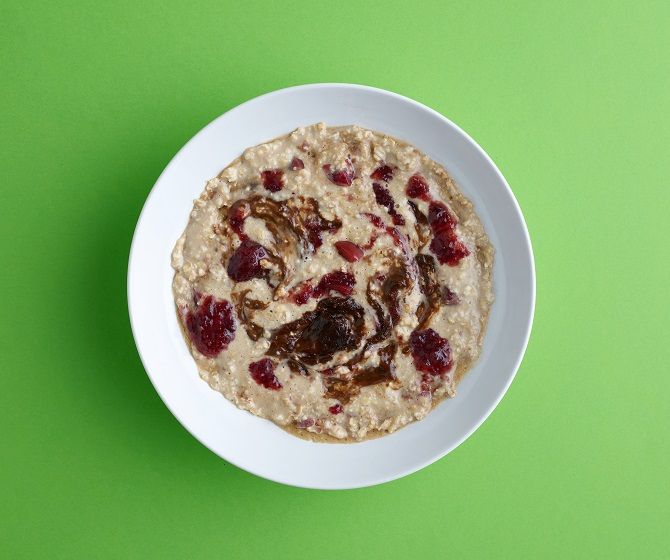By Dr Adam Simon
5 ways to trick your kids into eating healthily
Getting your kids to eat more nutritious foods can be a never-ending battle. We've put together five tips for smuggling healthy ingredients into their meals.
Getting your kids to eat more nutritious foods can seem like a never-ending battle, but thankfully - it's not one you'll have to fight alone.
To help you make sure your children are getting all the nutrients they need to grow up big and strong, we've put together five handy tips for smuggling healthy ingredients into their meals.
Why don't kids like vegetables?
Vegetables are packed with nutrients and low in calories - so you'd think humans would be geared up to gorge themselves on as many as they can.
Unfortunately, a quirk of evolution means we're much more likely to prefer sweet treats than beets and it takes real effort to grow to like vegetables.
Our early human ancestors had a wealth of fruits and veggies at their fingertips, many of which were unfortunately poisonous. As part of natural selection, those who steered clear of sour and bitter tasting produce in favour of sweeter alternatives were much more likely to avoid fatal foods and pass on their preferences to the next generation.
A few hundred thousand years later and we've been left with a genetic inclination towards sweet treats, which can be problematic - since these tend to be high in sugar and calories.
It's thought that this inherited preference is one of the main factors in turning kids off vegetables, although breastfed children may be at an advantage - since the taste of breastmilk will change to reflect whatever a mother has been eating.
If you're trying the straight-on approach to getting your kids to try vegetables, it can routinely take upwards of ten tries before they'll be happy adding an unfamiliar food to their diet.
Mind games
Children pick up practically all their behaviour from their parents and their eating habits are no different. Your attitudes to healthy foods will define how they view them, so make sure you make a show of enjoying yours.
Even if they don't initially pick up on it, a little reverse psychology can work wonders and they're bound to be curious about something that you relish so much.
It's important to acknowledge that children have a very different view of the world to adults and walking a mile in their shoes can be brilliant method for understanding their motivations.
Dictating that they have to eat something because you tell them to or trying to convince them of its health benefits is likely to result in a standoff, so put it in terms they'll understand and relate it to growing up big and strong - an issue they're going to be much more bothered about.
Get them involved
Kids love to get involved in whatever their parents are up to, so giving them a say in how their meals are prepared - or if they're old enough - even letting them help with the cooking can be a great way to break down barriers.
This can even extend to letting them have a say in the menu and taking them to the shops and letting them pick out their vegetables themselves.
Bargaining
Some experts are dead against bargaining, claiming it creates negative associations with food. However, for busy parents trying to feed themselves and their children - it's a popular and effective tactic.
Given that your child might need to try a food more than 10 times before they accept it, forcing them to have a single bite of anything they say ‘no' to before they can have dessert or go and do something fun can be a great way to increase this exposure.
There's a fine line to be walked and you don't want to risk overdoing it and create hang-ups about mealtimes. Getting them to try a little is more than enough to break down their resistance and you needn't make them finish the entire serving.
Similarly, reinforcing positive behaviour with little rewards can be a fantastic way to get them in the habit of trying and enjoying new things.
Making food fun
Children like colourful things and while it can require a bit of effort - putting together a tasting board of colourful fruits and veg can be a fun activity that gets them excited about the prospect of trying new things.
Don't reserve cookie cutters for baked goods either - shape fleshy vegetables like tomatoes and cucumber or try your hand at cutting creative shapes by hand or arranging various foods in patterns.
While us adults like to mix and match flavours, kids will tend to prefer keeping these separate, so if you're struggling you might have more luck with a tasting menu.
Camouflage
If you're not having much luck with conventional tactics or are just looking to supplement your efforts - sneaking vegetables into your kids' meals can be a great tactic.
Some favoured methods include:
Baking them into a cake: Savoury veggies like courgette and carrot can work really well in a cookie, while a variety of fruits, vegetables and nuts can be used to make a delicious muffin.
Blending them into a smoothie: While this may limit the amount of nutrients they'll be able to absorb, smoothies can still be great for making a variety of vegetables more palatable. To get your kids extra excited, refer to them as milkshakes - it's a little white lie that can go a long way.
Snack packs: Kids are excitable and getting them to sit down for meals can be a chore, but you can still make sure they're getting plenty of veg by preparing cold snack packs from carrots, diced peppers, grapes and raisins.
Dips: Dunking can be fun for kids - and nutritious. Try putting on a variety of dips - from hummus and salsa to almond butter and flavoured yoghurts.
And you?
We've just about scratched the surface of getting more nutritious foods into your kids' diets - so if you've got any tips to share, we'd love to hear from you.
Leave us a comment below, or get in touch through Facebook or Twitter - we always want to hear what you have to say.
And if you've got any concerns about you or your children's nutrition, see a doctor online now:

